Reviews
Daytona Saves the Day
Reviews
Daytona Saves the Day
It was, by most accounts, a lacklustre year at best. A year in which pop music lost a Starman and a Prince, the Internet lost Harambe the gorilla, iPhones lost their headphone jacks, a Union lost its Kingdom, and a presidential election lost its dignity and arguably its mind — leaving many of us at a loss for words. And that’s with two months left to go.
But while any number of us probably wouldn’t mind building a Trumpian mental wall — the greatest, biggest, most amazing mental wall you’ve ever imagined — to banish 2016 and all its spirit-crushing memories from our minds, we’d be remiss not to highlight some undeniably bright spots. While much of 2016’s events could be resounding ticks in the “loss” column, the year wasn’t without its key wins.
Or star additions, in the case of the watch industry. One of the most momentous of which is the new, lustrous, steel-and-Cerachrom Rolex Daytona — the latest evolution of perhaps the industry’s most iconic watch, produced by its most iconic and influential brand.
If ever there were a timeless watch, the Daytona is it. It’s the quintessential chronograph in terms of both guts and appeal, and the culmination of a history that’s, refreshingly, much brighter than our depressing 2016 recap.
But before we get into that, it would behoove us to start at the very beginning. Which, interestingly enough, begins on a beach.
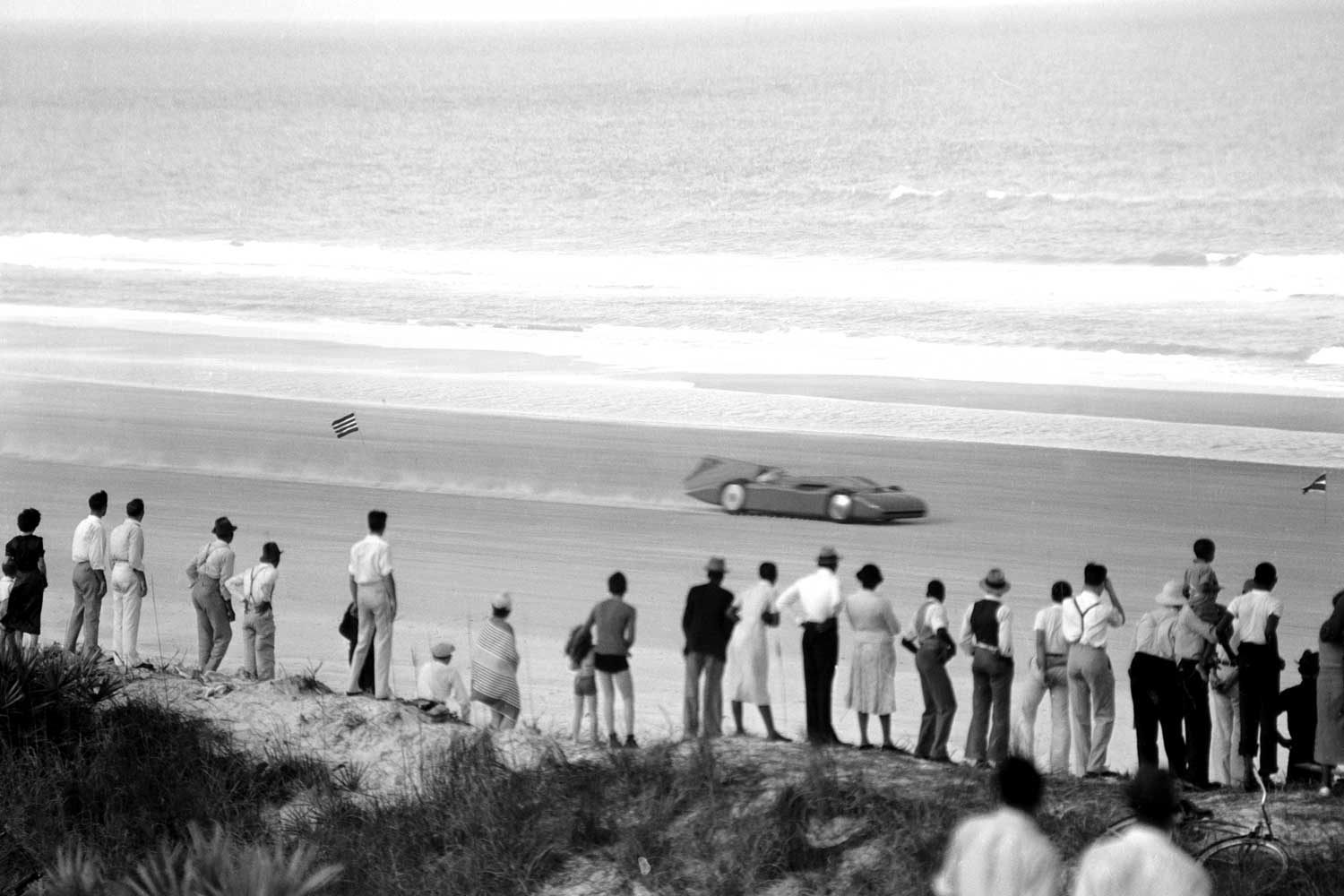
Daytona Days
Daytona Beach, to be precise. In the early 1900s, this arrow-straight section of the Floridian coast became hallowed ground for those with a need for speed. Its hard and flat conditions provided the perfect foundation to challenge (and routinely break) land speed records, leading intrepid drivers from near and far to flock to the sand to test seriously souped-up speed machines.
Competitors would accelerate over several kilometers of beach until they reached the starting mark of the famous “measured mile” — where, now at maximum velocity, their top speed would be measured. Thousands of spectators gathered to see the greatest drivers in the land gun for glory, but few tore up more sand than two English gents by the names of Malcolm Campbell and Henry Segrave.
When their motors became too fast for tracks across the pond, they turned to Florida’s burgeoning beach, bringing with them futuristic speed machines with delightfully earnest names like Mystery S, Bluebird and The Golden Arrow. The two had a series of classic contests, but it would be Campbell who’d ultimately dominate the record books, crossing the line in 1935 at a still-absurd 276.82mph.
Behind the wheel (well, technically on his wrist) for the record ride was his trusty Rolex Oyster. A devoted fan of the brand since 1930, Campbell was routinely seen wearing the watch — which he praised for its durability — both on and off the track. As Campbell and his Oyster challenged, time and again, the limits of mechanical engineering in spectacular races, interest in the sport surged, ultimately paving the way for the rise of the sports-dedicated chronograph.
While the sport was evolving in Daytona, shifting races from the beach to asphalt and eventually forming a powerhouse league in NASCAR, Rolex was honing its sport-watch repertoire. The brand released its first counter-equipped chronographs in 1933, and subsequent models added other racing-relevant functions to their dials, including telemetric and tachymetric scales to track distance and gauge speed, and pulsometers to measure heart rate.
In 1959, Daytona christened its famous 2.5-mile International Speedway — the fastest circuit in the US and a modern racing institution. Its founder, William France Sr., was a notable Rolex fan, and he named the brand Official Timekeeper of Daytona’s official (beach-free) race: the Daytona Continental. Its first winner took the checkered flag in 1962 — a year before Rolex would release a winner of its own in the Cosmograph.

Rolex’s testimonees, or ambassadors, include legendary racing driver Tom Kristensen who won at Le Mans a record nine times
The Cosmograph
Today, the Daytona name calls to mind a stellar track record highlighted by iconic aesthetics. Truth is, however, the pieces that started it weren’t “Daytonas” at all.
The first editions of Rolex’s racing-dedicated watch were “Cosmographs”. They were also standouts from the get-go, introducing a sportier aesthetic than previously seen in the brand’s pieces that featured inverse colors for the main dial and counters, squares on the counter markers, and a tachymetric scale that was shifted to the bezel rather than printed on the dial’s edge.
The pieces were highly legible, providing clear views of the chronograph indications, and their color-contrasted aesthetic opened the door for a range of distinctive dials to follow in the years to come. The most iconic of these is surely the famous “Paul Newman” Daytona, named after the renowned American movie star.
Newman’s well-known history with the Daytona would be better served with more ink in a separate article. In short, Newman first strapped on his “Panda” Daytona (black subdials against a white main) in the late 1960s and earned the colloquial distinction because his attractive watch became a key component of the masculine and sporty aura that the iconic Oscar winner, professional racer and race-team owner exuded.
The Cosmograph first received its “Daytona” designation in 1964, in a nod to Rolex’s sponsorship of the Daytona Continental (which ultimately became known as the “Rolex 24 At Daytona”). Though the curved signature now rests along the top edge of the six o’clock subdial, it was originally placed below “Cosmograph” at 12 o’clock.
These early Daytonas were completed with hand-wound mechanical movements, and of course, the waterproof Oyster case patented by the brand in 1926.
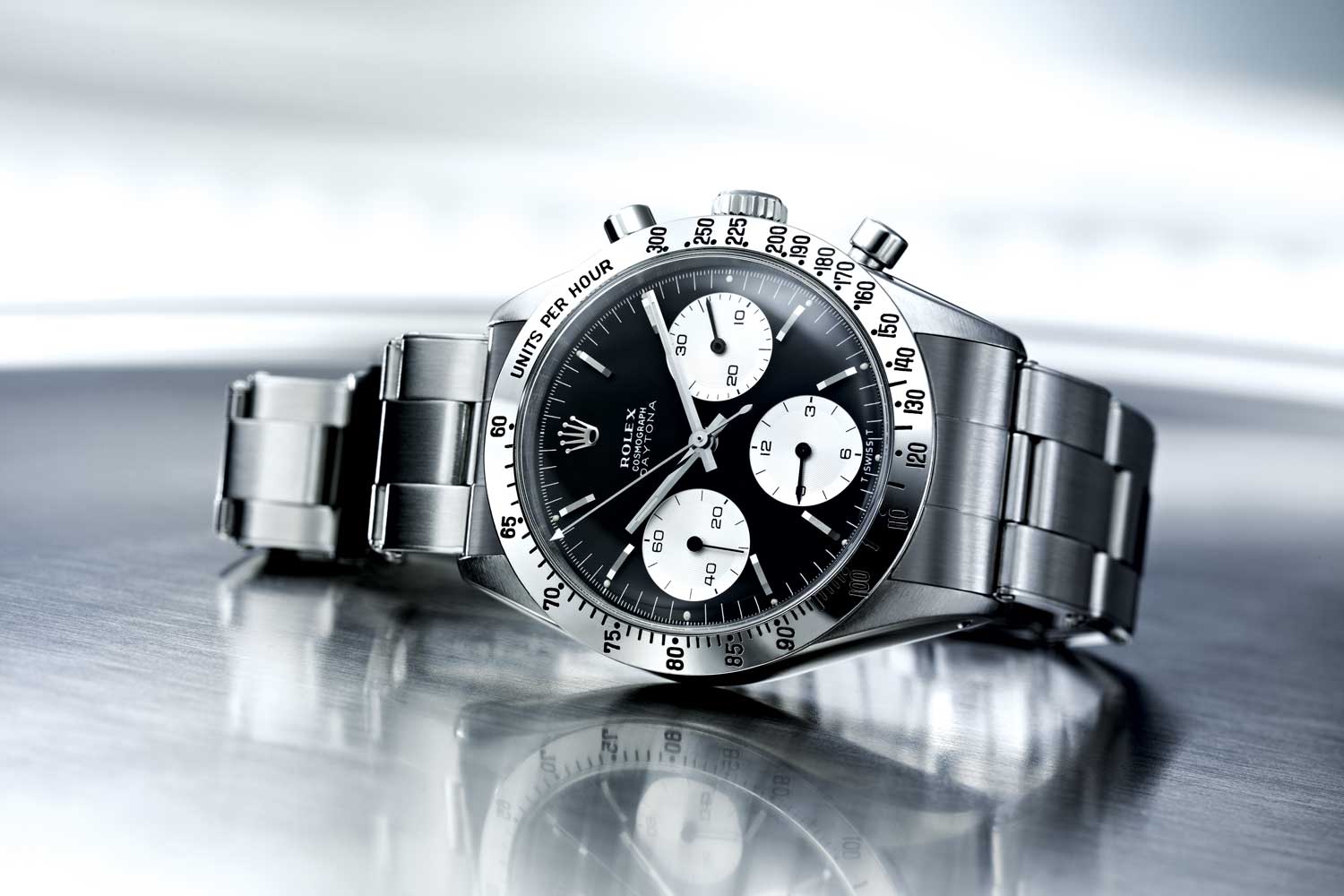
The 1963 Rolex Cosmograph featured chronograph counters that stood out against a contrasting dial
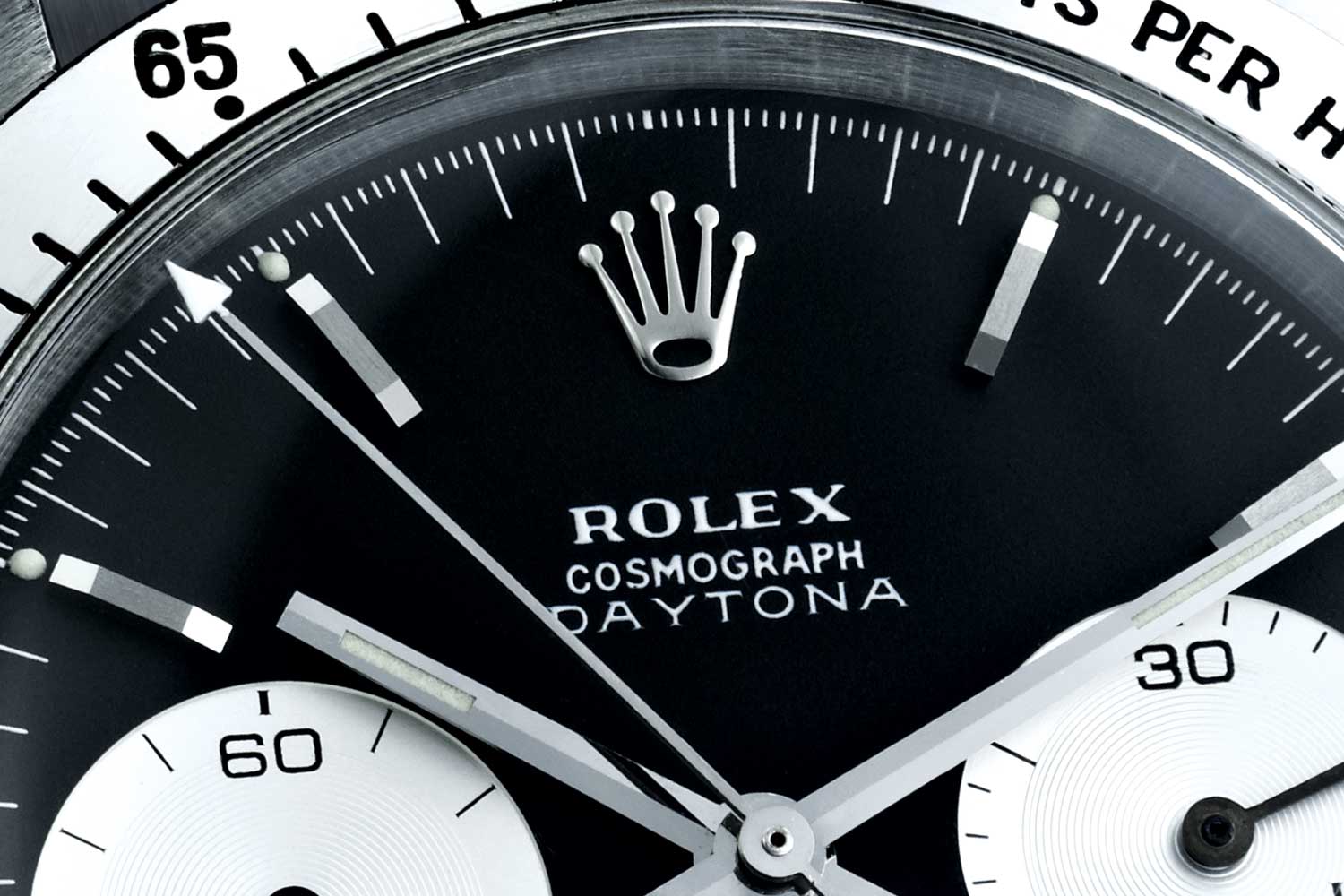
Its tachymetric scale was placed at the circumference of the bezel
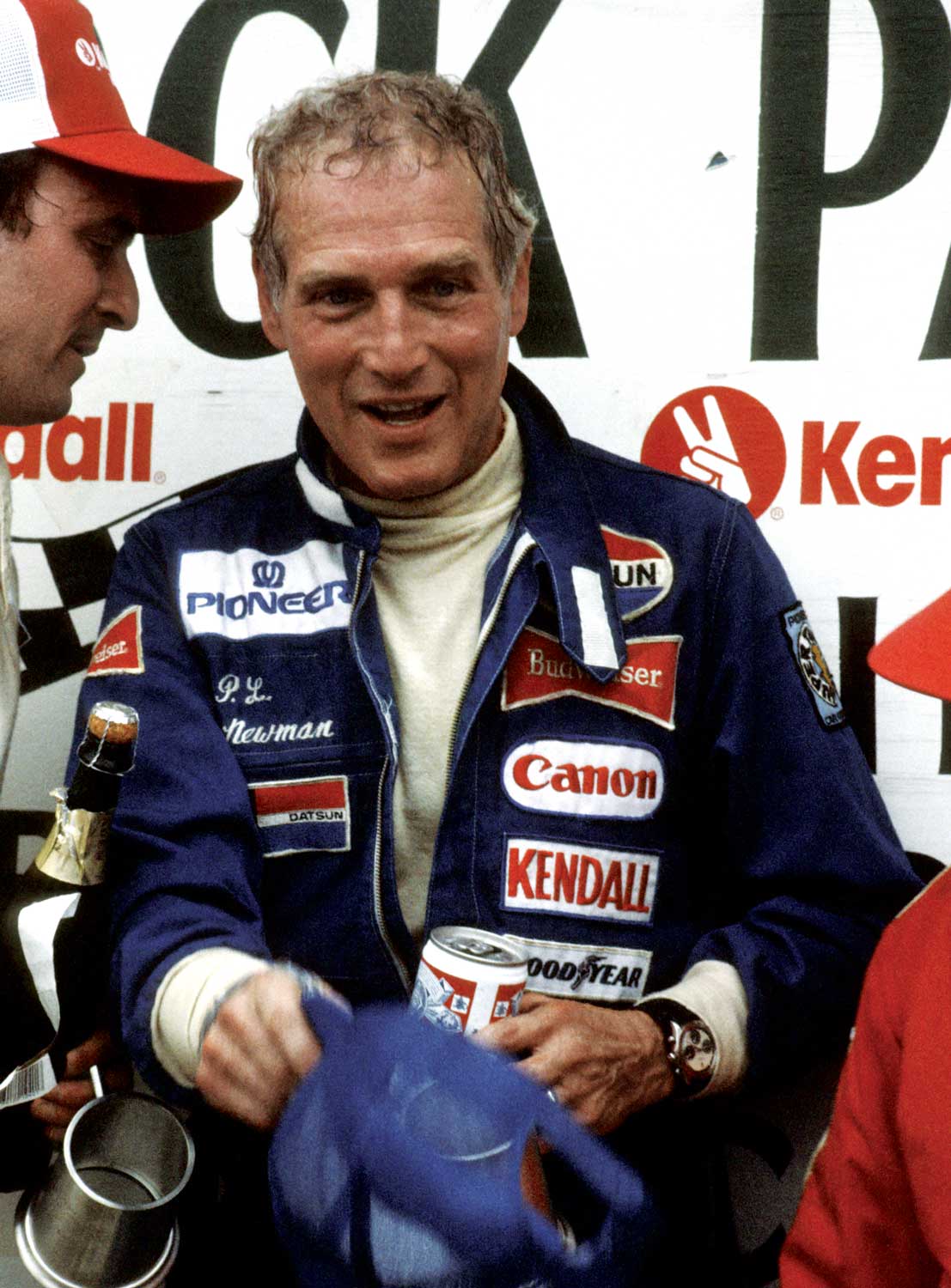
Paul Newman wearing his eponymous Rolex Daytona in 1982
Superlative Features
The Daytona’s first edition forged an identity for the watch as a sporty, technical piece that placed a premium on legibility. The next iteration managed to achieve more of the same, while also introducing notable adjustments to bolster key functions.
In 1965, Rolex released a new Daytona featuring a black Plexiglas bezel insert to enhance its legibility, and screw-down chronograph pushers in place of the pump pushers used in the previous model. The new screw-down design would prevent the pushers from being accidentally manipulated if brushed or bumped, and further seal the Oyster case from harmful water ingress.
The Daytona’s enhanced waterproofing measures would also lead Rolex to add “Oyster” to its list of dial‑side inscriptions — a list that would continue to grow as the brand added further “superlative” features.
Like chronometer certification. The year also marked the first time the Daytona was made available in an 18K yellow-gold edition, which also happened to be a certified chronometer. In a rare achievement for chronographs of the time, the yellow-gold Daytonas had been judged to possess the requisite mechanical chops to bear “Superlative Chronometer Officially Certified” on their dials, proving that watches of Rolex’s premium racing line could be distinguished as much by their guts as they could by their glow.
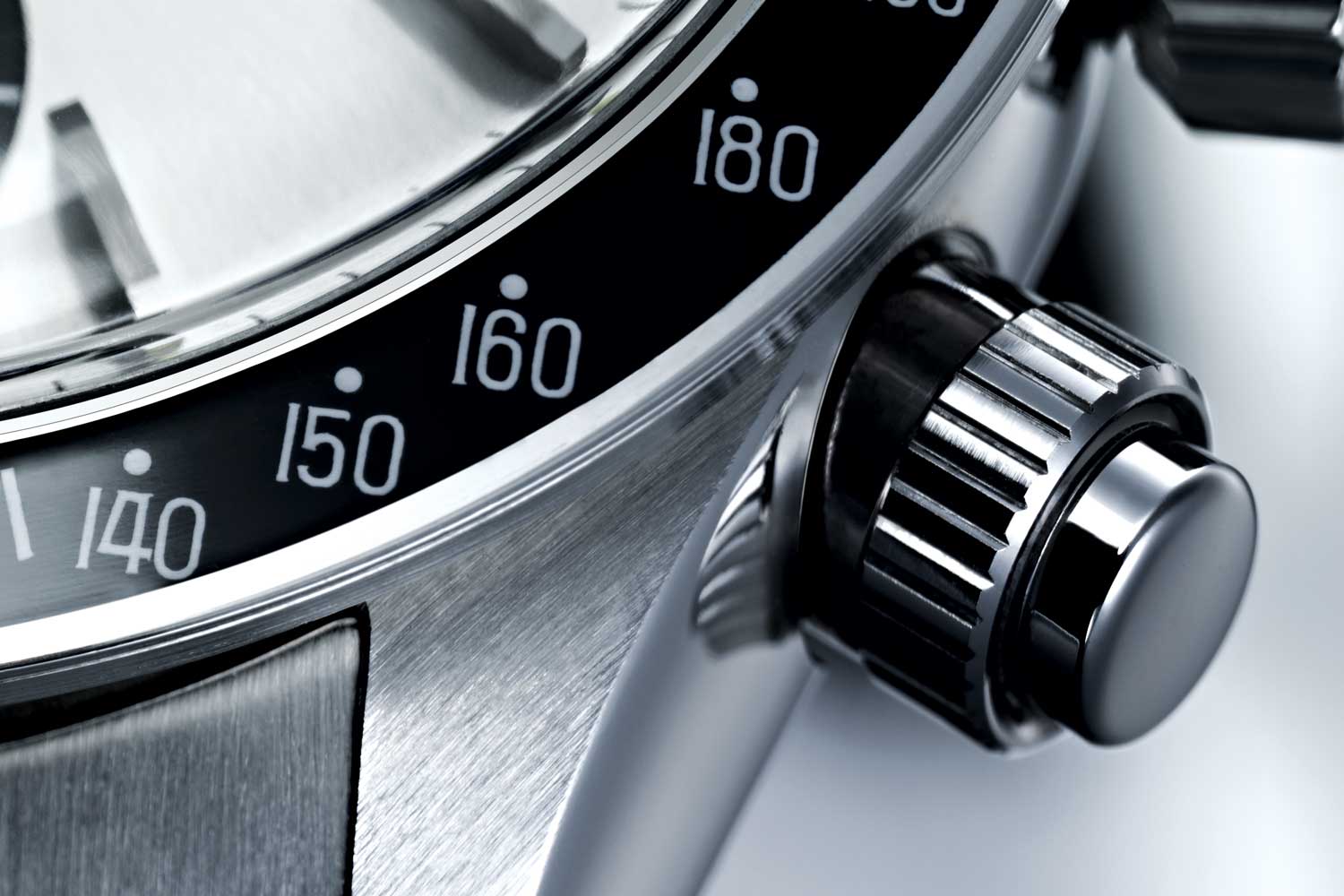
The 1965 Rolex Cosmograph Daytona was enhanced with screw-down chronograph pushers
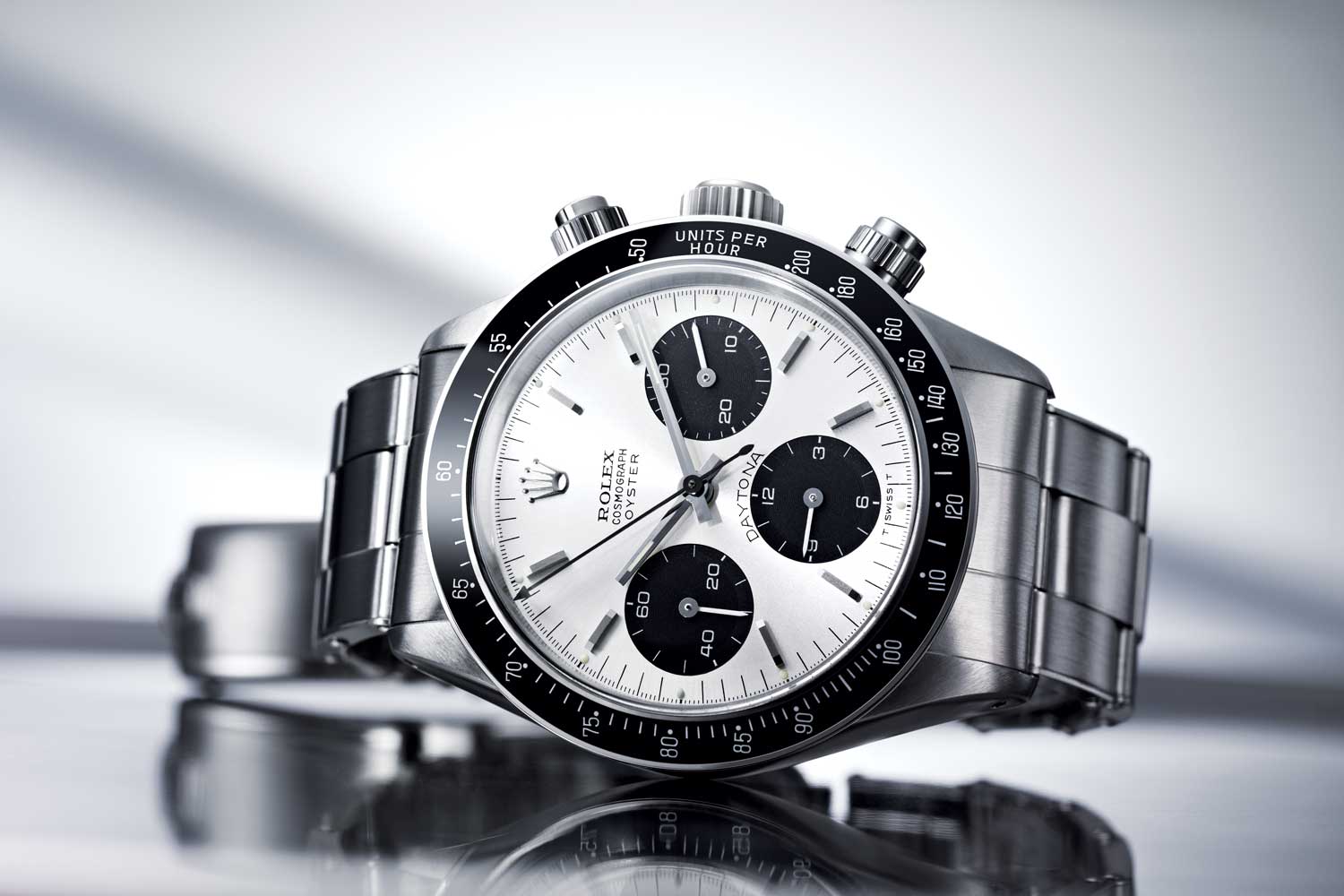
The same watch also featured black Plexiglas insert for the tachymetric bezel
The Automatic Daytona
The Daytona’s guts remained essentially the same — mechanical manual-wound — for over 20 years, even in the face of the industry-shaking surge of quartz-powered movements in the late ’60s and ’70s. That is, until 1988, when the brand revealed that the next evolution of its iconic racing watch would be self-winding.
The new movement — the caliber 4030 — had been modified from a commercially available caliber and made decidedly “Rolex”, outfitted with an oscillator with a variable-inertia balance wheel, Microstella regulating nuts and a hairspring with a Breguet overcoil, as well as a self-winding module with a perpetual rotor the brand invented in 1931. The result was a movement that was COSC-certified and a watch that would now feature the “Superlative Chronometer Officially Certified” stamp on all of its editions.
The Daytona’s case was expanded to accommodate the new movement, growing from 36mm to a more robust 40mm, its tachymetric bezel was widened, and shoulders were added to protect the crown. The dial was also refreshed to achieve a more modern aesthetic, given new hands, hour markers and counters inside banded circles. The red “Daytona” signature would remain in its place, atop the subdial at six.
Multi-year waits for the new editions were far from uncommon. The update had proven a huge hit with a wide range of collectors, tapping into a renewed public interest in assertive, sporty chronographs and establishing the benchmark of ravenous consumer demand that we’ve come to expect with the release of new Daytonas.
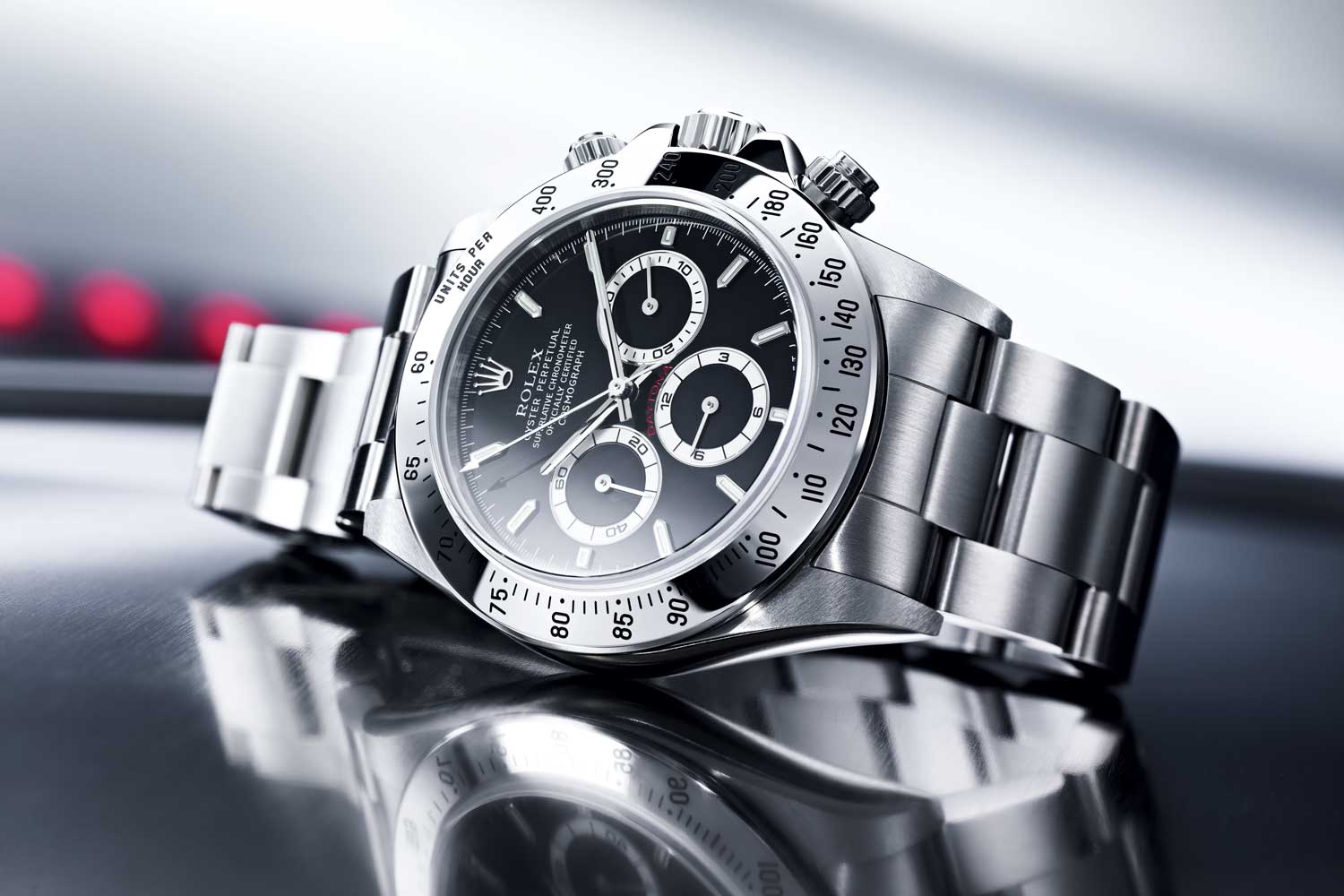
The 1988 Cosmograph Daytona saw a further evolution of the watch as it was powered by a self-winding movement
In-house Excellence
The Daytona unveiled to greet the new millennium was the first to feature a completely in-house movement. While the watch’s exterior largely retained the cues of its 1988 predecessor, at its heart beat the new, self-winding caliber 4130 — the same caliber used to craft Daytonas today.
It was a simpler and more efficient mechanism, featuring 60 percent fewer components than the previous edition, and the space it saved allowed brand artisans to extend the movement’s power reserve from 50 to 72 hours. Dial-side, the new construction meant that the small seconds was moved from nine to six o’clock and the hour and minute counters were shifted to slightly above the equator of the dial.
The caliber was also the first to implement Rolex’s proprietary Parachrom hairspring in its oscillator. Crafted from a niobium, zirconium and oxygen alloy, the Parachrom hairspring added unprecedented stability and accuracy to the movement. It also served as a fitting horological parallel to the kind of ultra-precise engineering representative of the speed machines that inspired the line’s name.
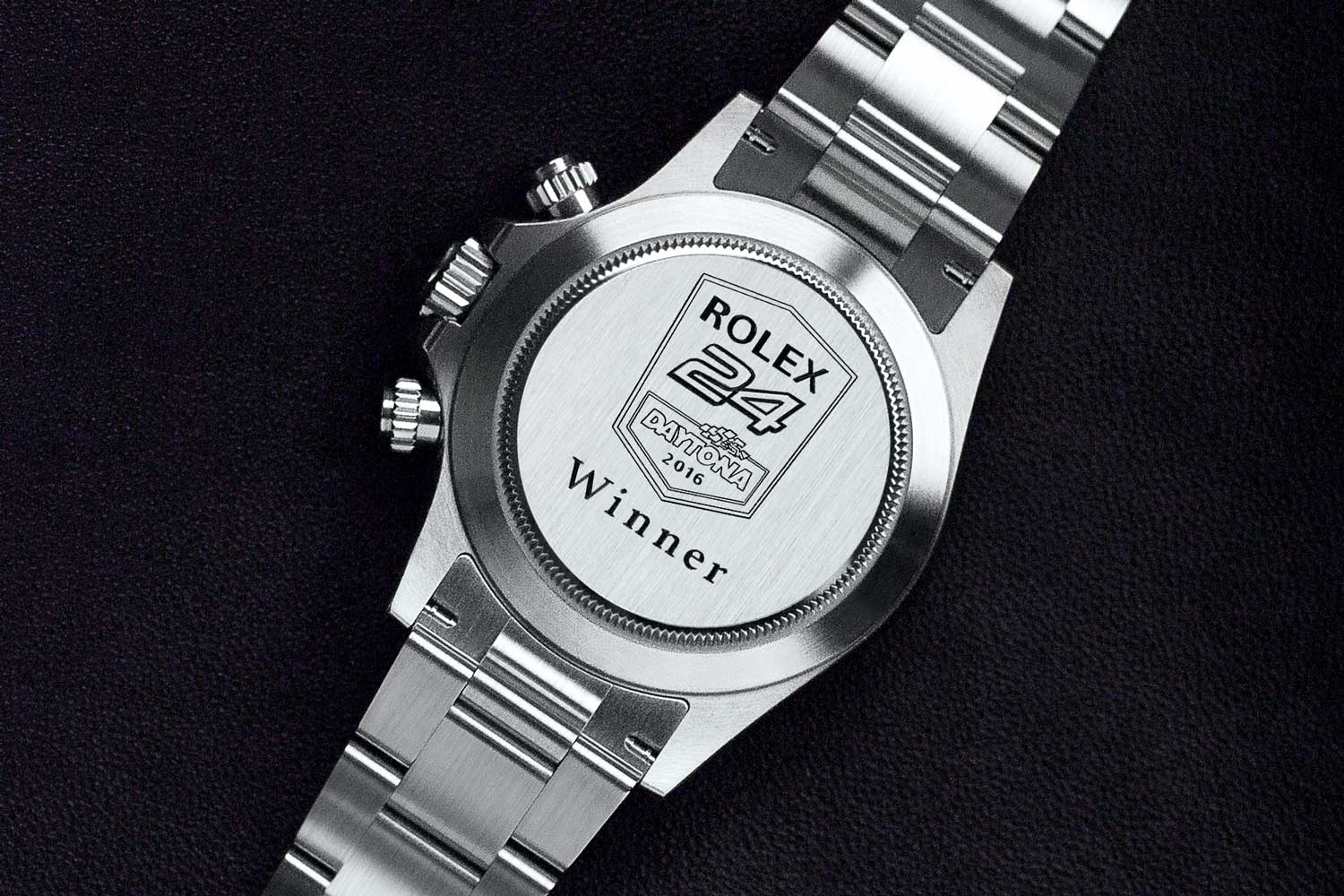
The 2016 Rolex Cosmograph Daytona that was specially engraved with the logo of the Rolex 24 Hours At Daytona race and, in keeping with tradition, presented by the brand to the team principals and winning drivers of the race
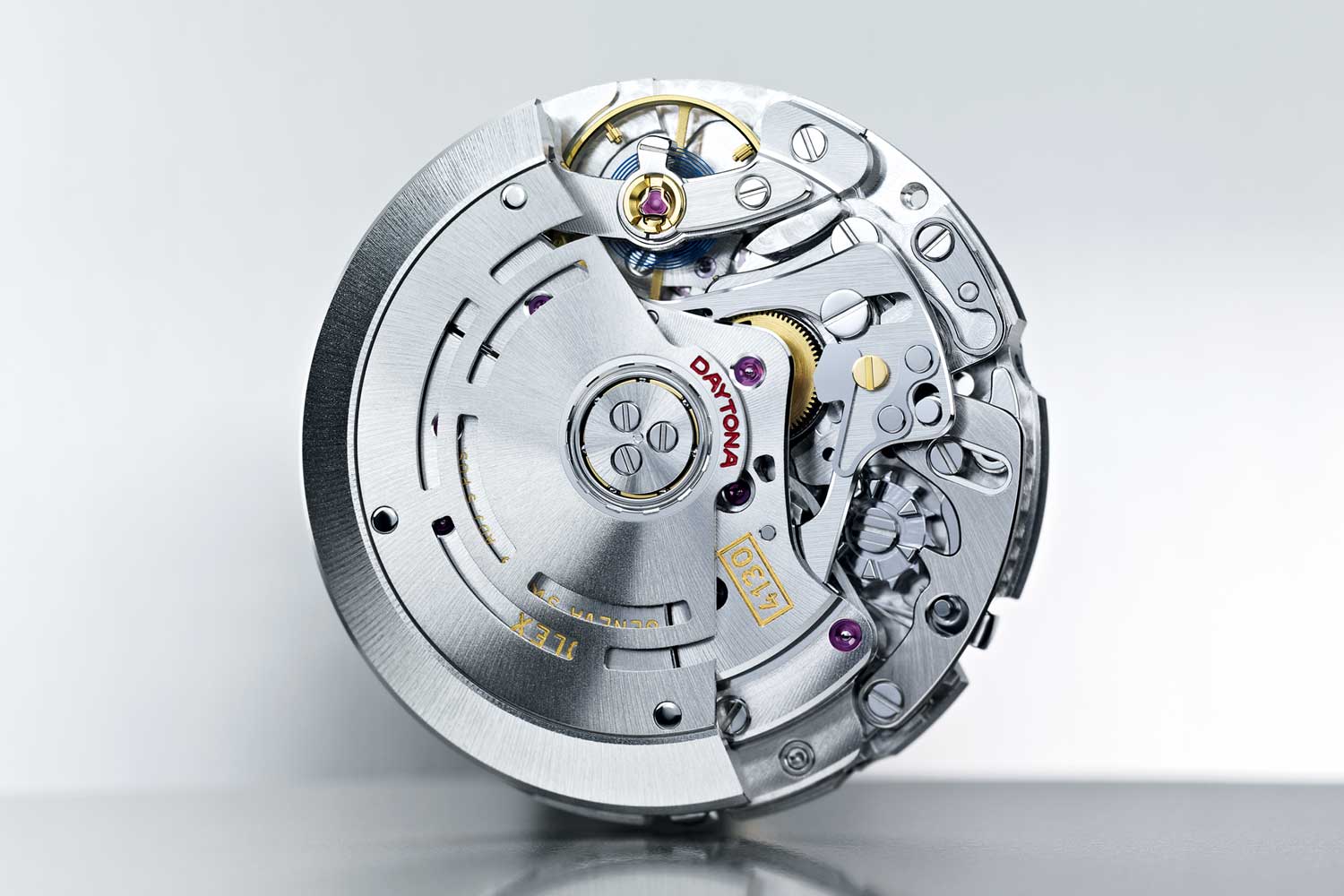
The watch's self‑winding cal. 4130
Monobloc Advancement
Demand for the latest Daytona has been simply staggering, even by the standards of the famously popular line.
Crafted in steel and with a choice of a black or white dial, the Daytona’s latest generation features a black Cerachrom bezel that both exemplifies the brand’s innovation and stands as a stunning tribute to one of the aforementioned classic pieces.
The 2016 Daytona’s ceramic bezel harkens back to the 1965 model that first introduced the aesthetic to the line. In place of its ancestor’s Plexiglas insert, the new edition features a bezel of monobloc ceramic — virtually scratch-proof, corrosion-resistant and impervious to UV rays, meaning its gorgeous jet‑black hue will remain pristine. A thin layer of platinum coating the numerals of the tachymetric scale provides the bezel with further visual pop, making a watch whose bread and butter has historically been legibility even clearer.
The watch’s movement, of course, remains the excellent, self-winding caliber 4130, and its dimensions and layout are likewise unchanged. Considering how enthusiastically collectors have historically responded to the Daytona’s iconic look, it’s tough to argue against such aesthetic consistency.
It’s equally difficult to overstate the Daytona’s status in both the industry and the hearts of its devoted collectors. It’s an icon; there’s no mistaking that. There are few lines out there that compare to it in terms of industry clout, sales and representation on collectors’ “grail watch” lists. And each new edition effectively magnifies its already immense popularity.
Needless to say, those out there who wish to get their hands on Rolex’s signature racing watch may be in for a long (as in multi-year) wait. But if and when you eventually receive your Daytona, you will have secured the latest edition of a truly transcendent timepiece — one that’s managed to remain ahead of the pack for generations, and is known to make its crowd go wild.
And as thousands of your contemporaries out there would promptly attest, that’s always worth the wait.
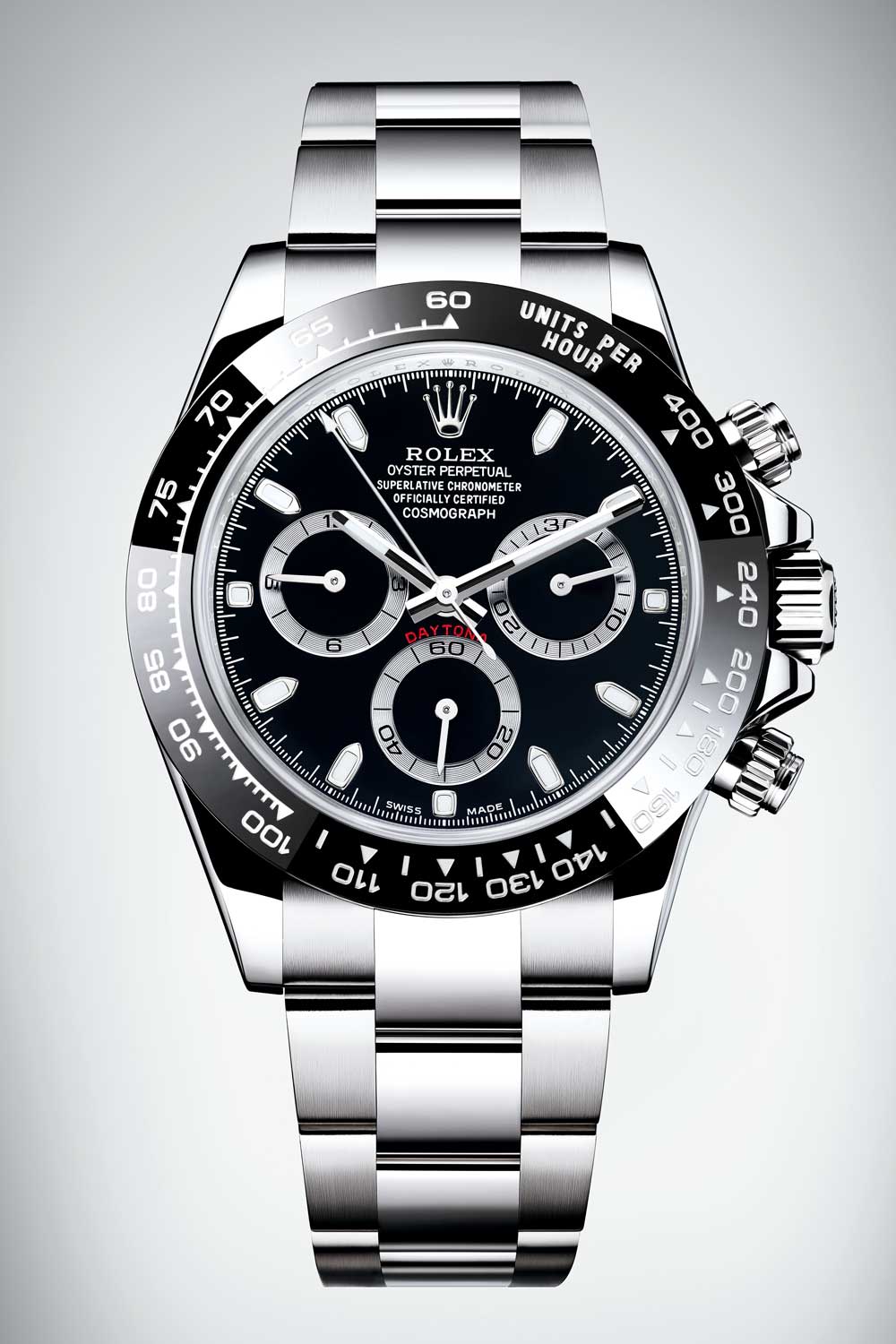
The 2016 Rolex Daytona (ref. 116500LN) featuring a black Cerachrom bezel and black dial
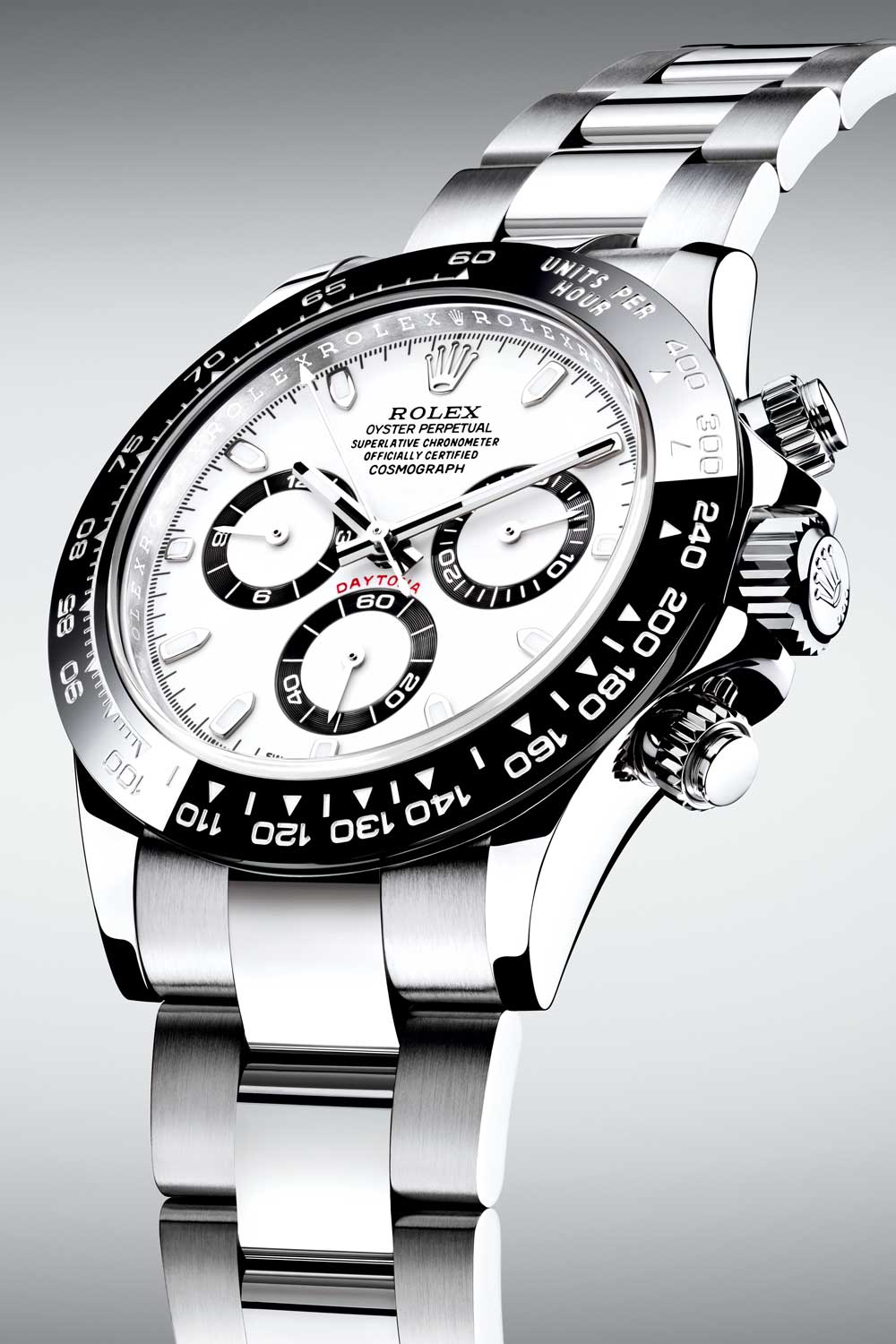
The 2016 Rolex Daytona (ref. 116500LN) featuring a black Cerachrom bezel and white dial
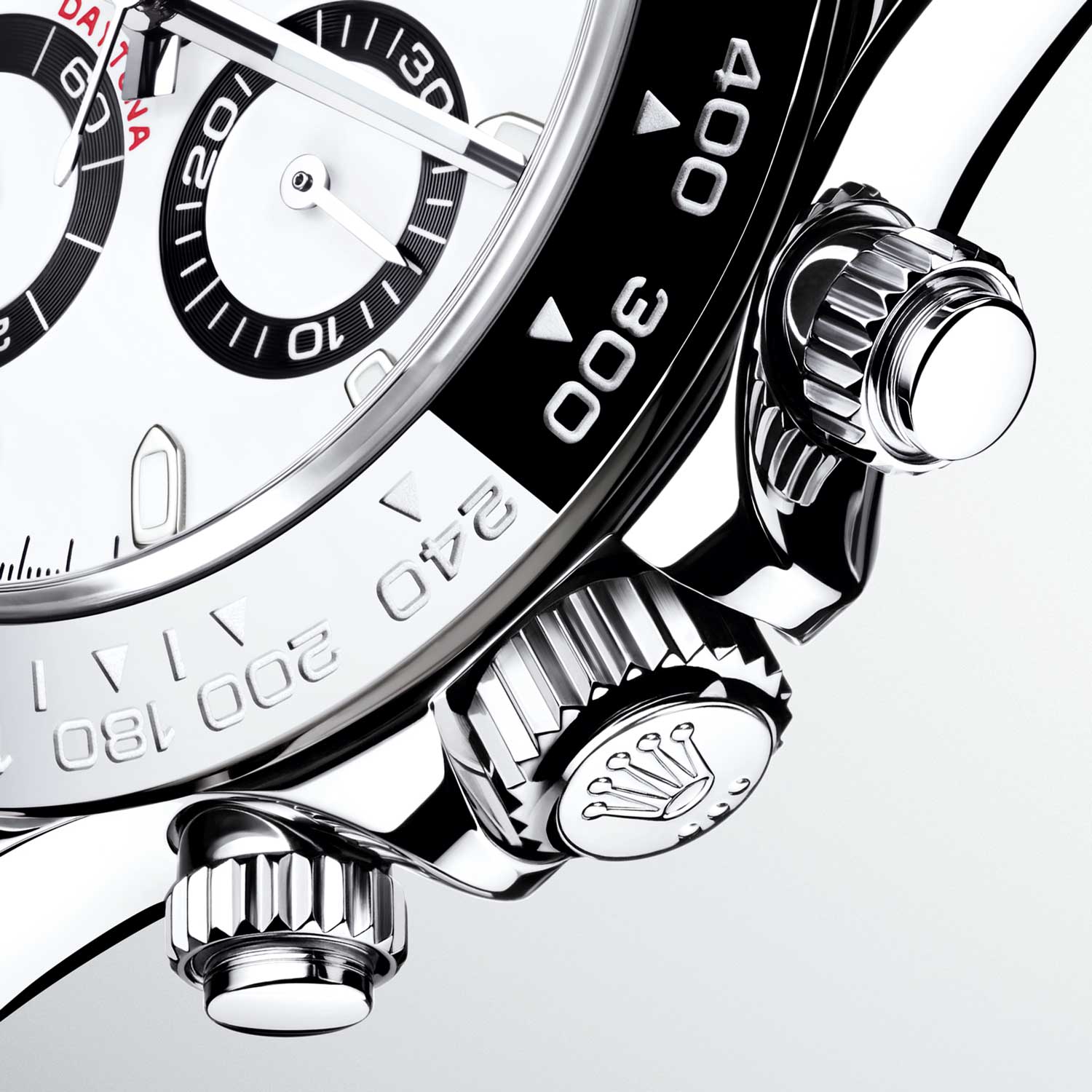
The crown and chronograph pushers
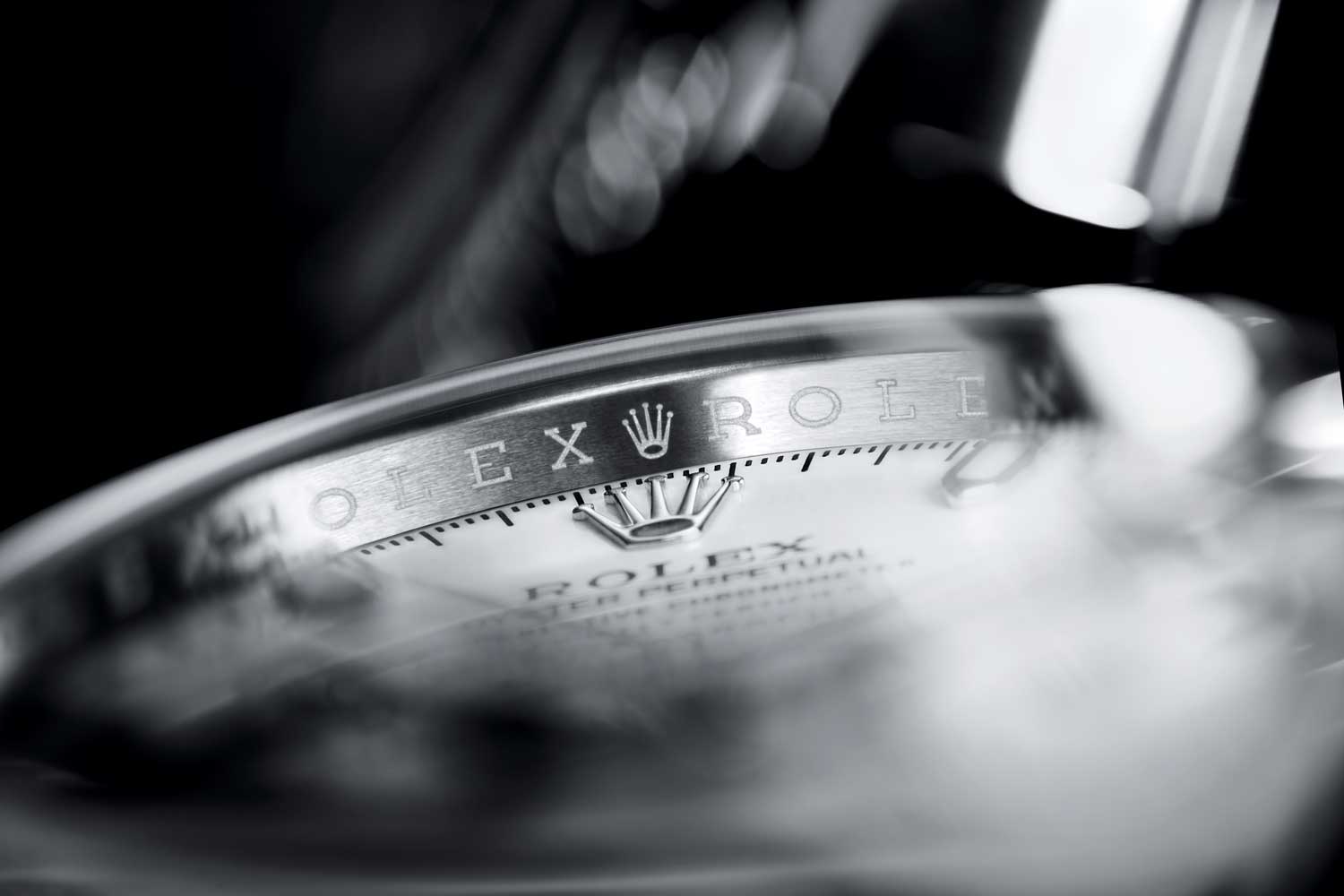
The Rolex name and logo on the watch
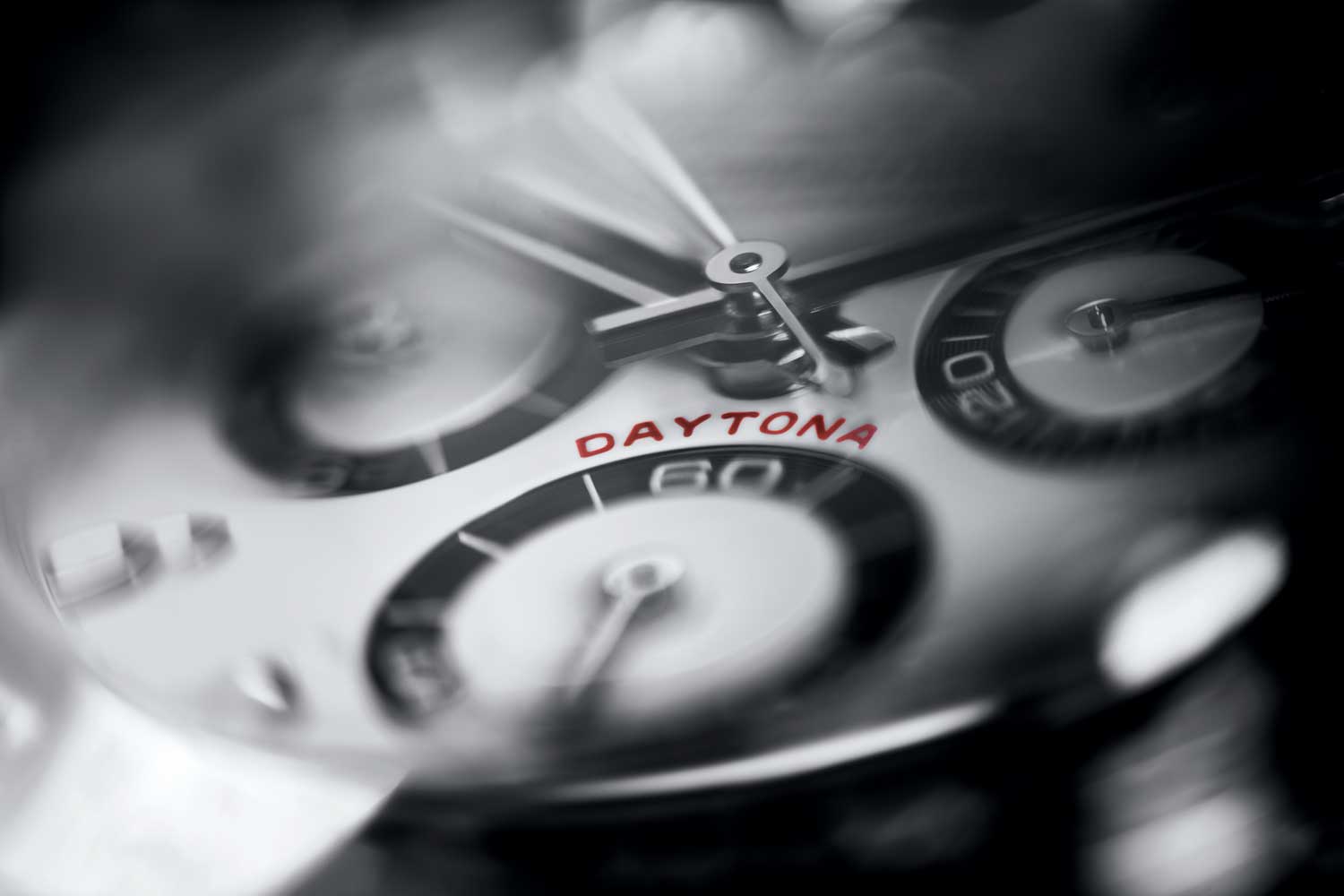
The 'Daytona' name printed in red on the dial










